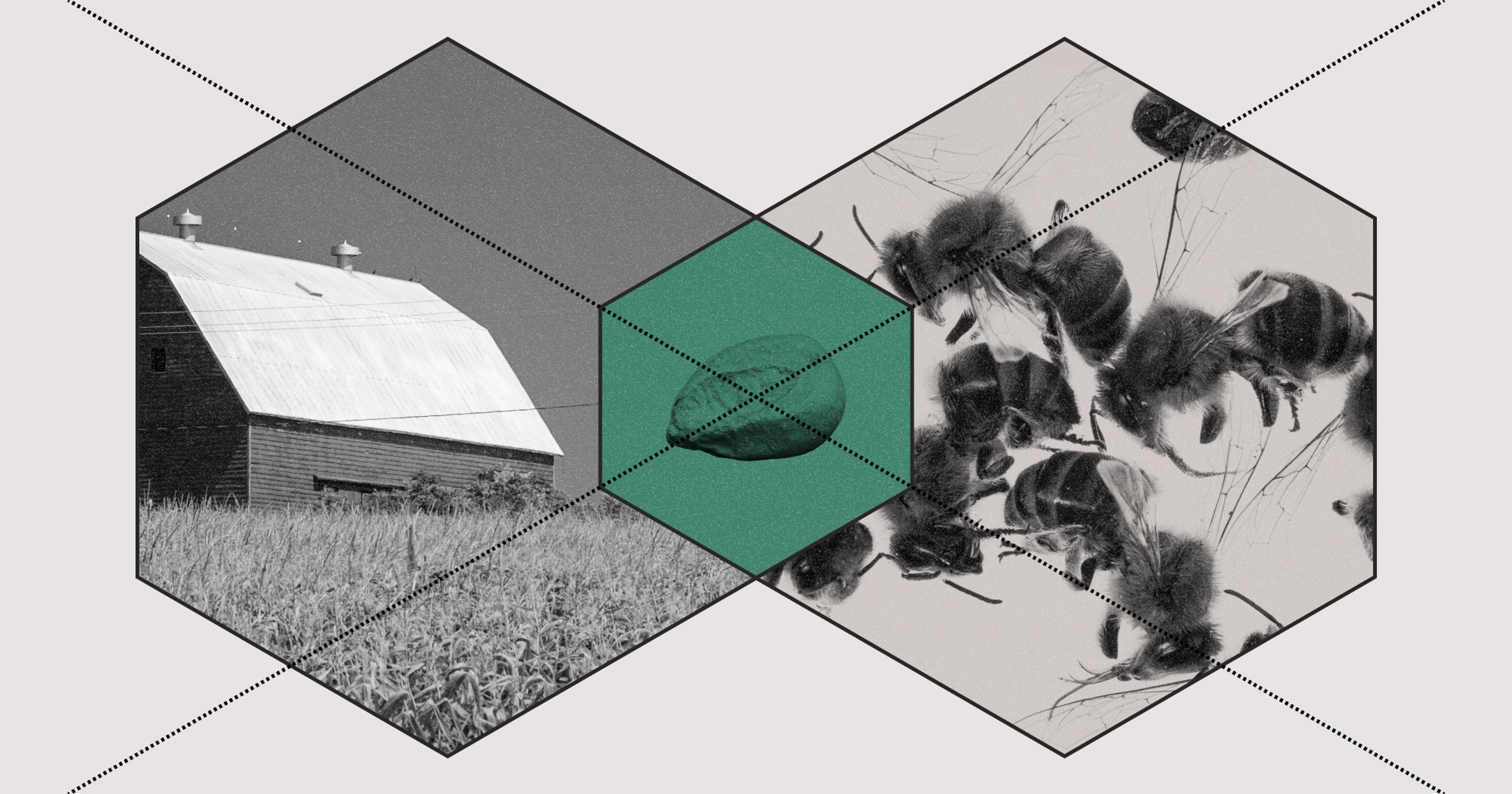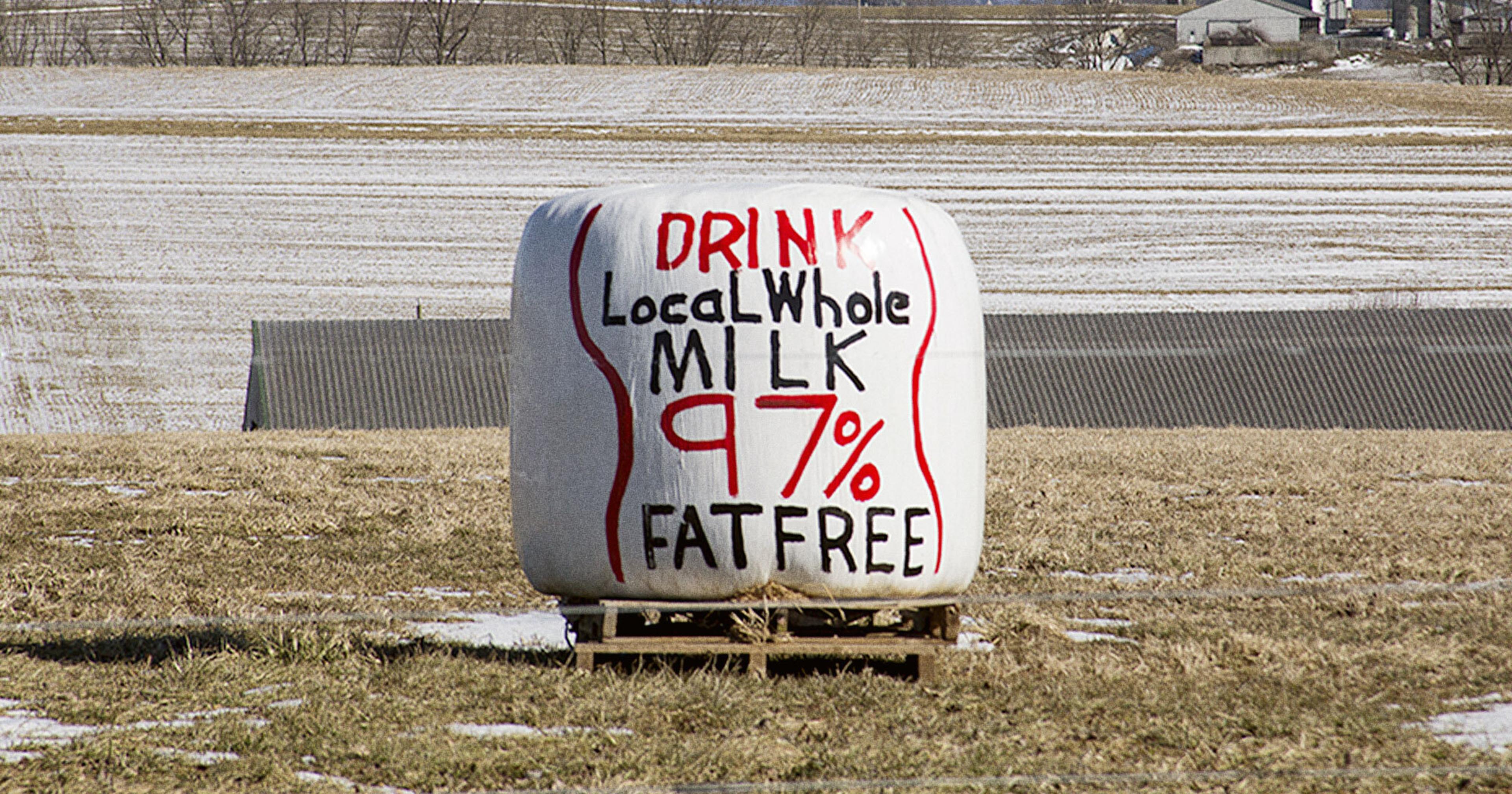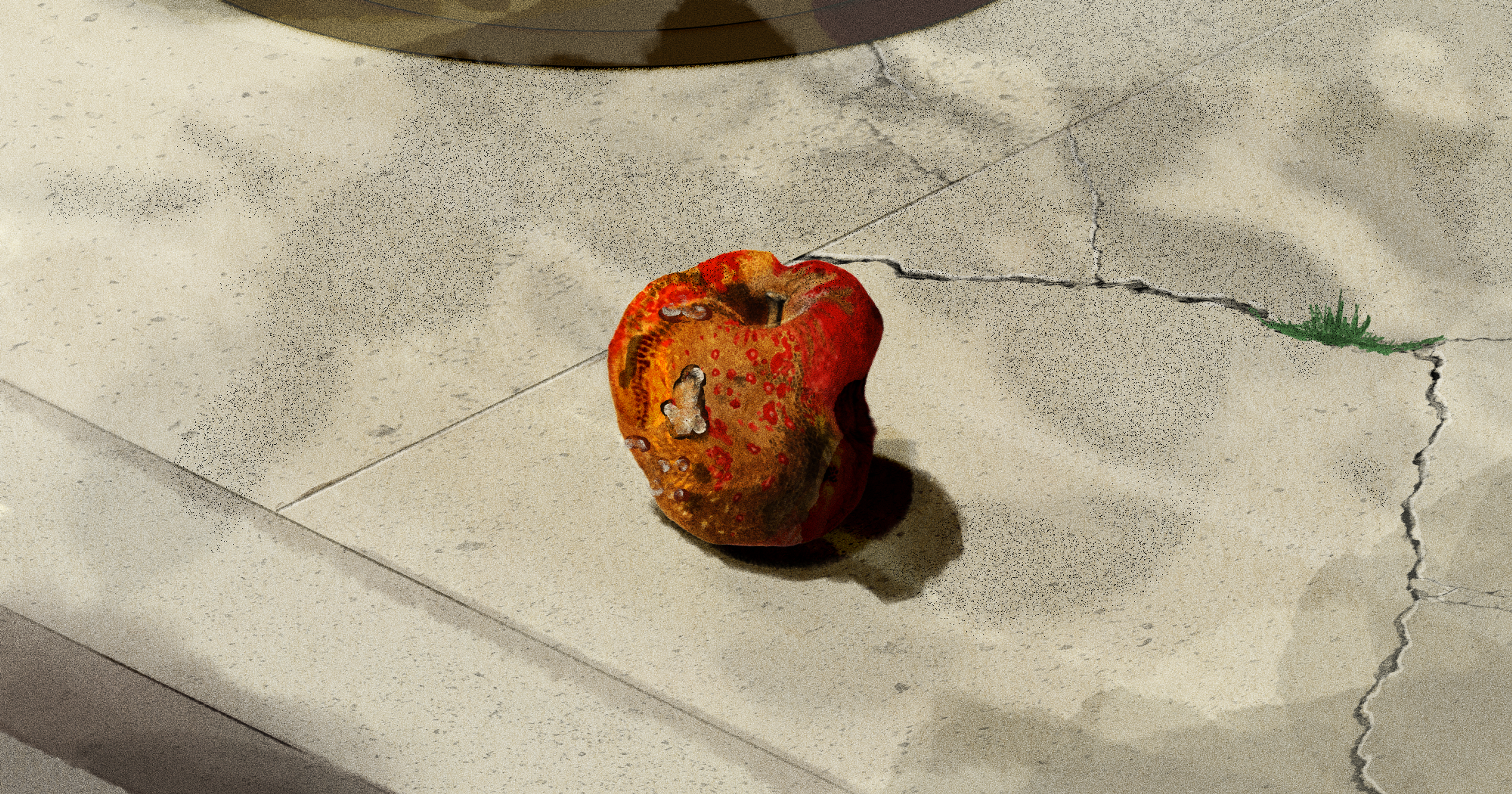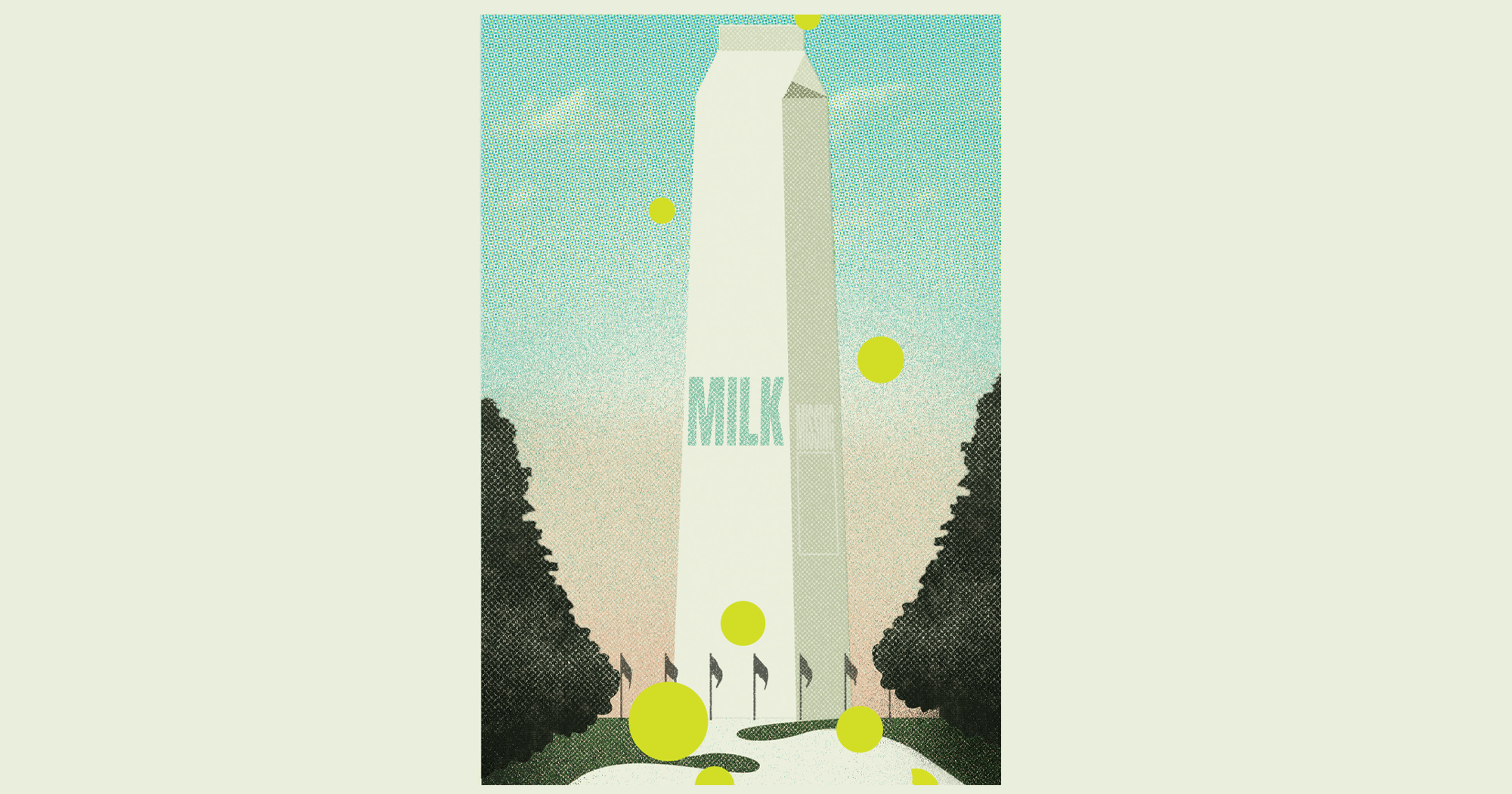Banned in Europe, this class of honeybee-harming pesticides is facing a possible ban in New York. Some researchers see a downside.
In January 2023, the state of New York will begin restricting the use of three neonicotinoid pesticides for most outdoor lawn and garden use. The action is meant to reduce harm to the honeybees and other wild native pollinators vital to producing our food crops — many of which are experiencing precipitous population declines.
Although it’s less prohibitive than the proposed Birds and Bees Protection Act that passed in New York’s State Assembly, any restriction of ubiquitous neonics — let alone bans or even gradual phase-outs — faces pushback from members of the farming community. The trade publication AgDaily, for example, questioned whether bees actually encountered dangerously high volumes of neonics as they foraged — an opinion echoed by some farmers.
“Applying minute amounts of neonics as a seed treatment assures that corn and soybean growers will get a viable crop each year,” dairy farmer and Northeast Dairy Producers Association board member AJ Wormuth told Morning Ag Clips in April. And as Birds and Bees awaits possible reintroduction to the Senate — and neonic restrictions take hold in other states — some researchers are encouraging adjustments to how these chemicals are used, rather than wholescale prohibitions like Europe has adopted.
Which of course begs the question: What actions does the science support?
A team of researchers at Cornell University spent two-and-a-half years looking into this very question, using data from 5,000 field trials and analyzing over 400 peer-reviewed studies. Their 432-page assessment considers the benefits of neonics to farming and attendant risks to pollinators (though not to other animals or humans). “I took on this project knowing that the answer probably wasn’t going to be simple,” said report co-author and entomologist Scott McArt. “What we found is there’s actually some pretty clear results both in terms of risk and benefits,” both for and against the use of neonics in some contexts.
Neonics 101
Neonics are the most widely used insecticides in the world. Currently in the U.S. we deploy imidacloprid, thiamethoxam, clothianidin, dinotefuran, and acetamiprid, which can be sprayed on leaves of row crops and orchard trees, doused onto the soil around plants, or injected into tree trunks. They can also be applied to vegetable seeds as a coating, but by far their most common use is as a seed coating on field crops like corn and soy, which take up the most acreage in U.S. agriculture.
The risks and benefits differ among these chemicals, how they’re applied, and for what reason. The sub-category known as nitroguanidines last a particularly long time in the environment, they’re proven to be highly toxic to bees, and they’re taken up by every part of a plant including its pollen and nectar. They kill honeybees, the pollinator species we have the most data on, although ground nesting bees — making up 54 percent of New York state’s wild bees — are thought to be especially vulnerable to neonic-contaminated soil. The Cornell review also found that neonics affect honeybee behavior and reproduction in addition to killing them outright.
“What do we do other than just ban all pesticides, which obviously we’re not going to do unless we fundamentally overhaul how we do agriculture?”
Full-scale bans of neonics can be a tough sell, though, because they’re relatively non-toxic to humans compared to, say, the older insecticides class of organophosphates. Additionally, “For many New York fruit and vegetable crops,” wrote the Cornell researchers, “soil- and foliar-applied neonicotinoid products provide consistent benefits for farmers and are important components of insecticide rotations. For a handful of important pests, such as root-form phylloxera (grape), root weevils (berries), boxwood leafminer (ornamentals), and thrips and Swede midge (cabbage), there are few or no effective chemical alternatives available in New York. In cases where there are effective alternatives, they may be more expensive, require greater safety protection for applicators, or need to be applied more frequently.”
Acetamiprid, imidacloprid, and thiamethoxam will be restricted in lawn and garden use in New York this January; only people certified to apply these pesticides will be allowed to do so in various landscaping situations (applications in tree trunks and around the base of trees and shrubs are exempt), and they’re banned from consumer use. Still, the Cornell researchers found that acetamiprid is about two to three orders of magnitude less toxic to bees than imidacloprid, thiamethoxam, and clothianidin. Banning its use “is going to likely introduce more toxic alternatives that could actually do more harm than good” for pollinators, according to McArt.
Weighing risks and benefits
The Cornell researchers found that using imidacloprid, clothianidin, and thiamethoxam on cucurbits created reproductive impacts on honeybees 85 percent of the time. EPA only studies honeybee mortalities but McArt called this methodology “inadequate, from a risk assessment perspective — like approving the Covid vaccine but only checking if it kills you or not.” For example, a Swedish research team recently discovered that solitary bees exposed to clothianidin were slower and produced smaller strawberries crops because of reduced pollination performance.
The most damning evidence of harm to pollinators was connected to neonic-coated field crop seeds. The U.S. stopped tracking percentage data in 2014, “But every indication from non-systemic reviews is that it’s somewhere around 90 to 100 percent of [conventional] corn in New York and somewhere around 50 to 70 percent of soybeans,” said McArt. (Wheat seeds are also coated, but McArt said he hasn’t found percentage estimates.) According to Dan Raichel, acting director of the Pollinator Initiative at the Natural Resources Defense Council (NRDC), a U.S. farmer looking for uncoated corn seeds might have to hunt to find them.
As many as 74 percent of known exposures to these treated field crops result in adverse effects to pollinators. However, “The economic benefits to farmers are very fleeting and very small, if they exist at all. That’s the most important conclusion of the entire report,” said McArt. “Probably less than 10 percent of farmers are actually getting economic benefits from using these seed treatments.” EPA’s own research from 2014 supports this conclusion with regards to soy, as does a 2017 Purdue study regarding corn.
Paths to safer pesticide use
McArt said one way to reduce seed coating usage would be developing better modeling and monitoring, so that farmers have more accurate data when trying to determine whether and when to use coated seeds; New York’s agriculture and markets department is already exploring this by funding its integrated pest management (IPM) program. This is “To better develop models for, and also monitor and try to predict, when economically important pests will be a problem on fields,” said McArt.
“Most farmers are losing money by having these coatings on their seeds; at best they’re breaking even, and the use is a very harmful one,” said Raichel, pointing out that only about 5 percent of the coating on a corn seed gets into the target plant; the remaining 95 percent persists in the soil and moves around when it rains or crops are irrigated. “These are the obvious next step to target.” The Birds and Bees legislation would work toward doing just that, by banning the sale and distribution of coated field crop seeds, in addition to phasing out non-ag uses of neonics.
“Most farmers are losing money by having these coatings on their seeds; at best they’re breaking even, and the use is a very harmful one.“
This would be more restrictive than legislation passed, for example, in New Jersey, which will restrict use of neonics in most landscaping situations starting this October; and Maine, which in 2021 banned dinotefuran, clothianidin, imidacloprid, and thiamethoxam in residential landscaping, such as on lawns and ornamental plants. In California, proposed legislation would ban neonics for lawn and garden use; it passed the state legislature and is now awaiting signature by Governor Gavin Newsom. EPA is also currently undertaking risk assessments for four neonics.
Raichel said the alternate pesticide category diamides could be an incremental improvement over neonics. “They’re about 1,000 times less acutely toxic for bees, 10 times less acutely toxic for people, and they’re also 10 times less toxic to birds. Are they still a concern for the environment? Absolutely. But on a number of factors they’re not as nearly as pernicious as the neonicotinoids.” Still, he said, “We can’t afford to make the same mistake we made with neonics … and we don’t know what we’ll know about diamides in 25 years.”
Neonics can be extremely effective and therefore difficult for time-strapped farmers to exclude from their rotations. “So, what do we do other than just ban all pesticides, which obviously we’re not going to do unless we fundamentally overhaul how we do agriculture?” asked McArt. NRDC is in favor of more acreage for organic crops. Raichel’s colleagues Allison Johnson and Lena Brook wrote in an email, “Organic is a time-tested alternative to conventional systems that use neonics. Organic producers are required to source untreated seed, and several consistent decades of growth in organic are a testament to the viability of organic farming systems.”
McArt said the greatest threat to bees is widespread environmental contamination. So, “The biggest thing that anyone can do is really think about when you need to use a pesticide.” At minimum, legislation like the Birds and Bees Protection Act would force farmers to confront that question head-on.







